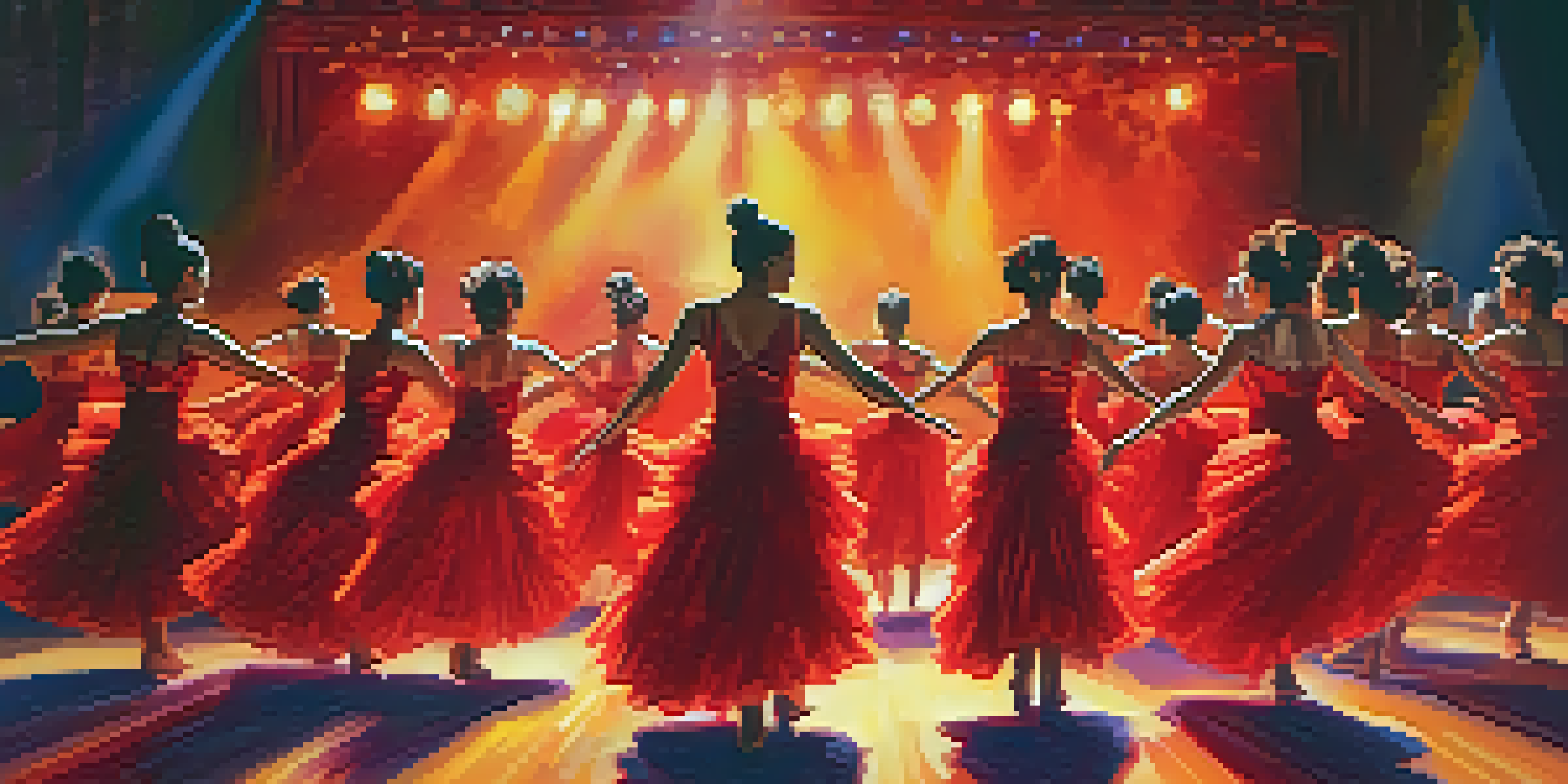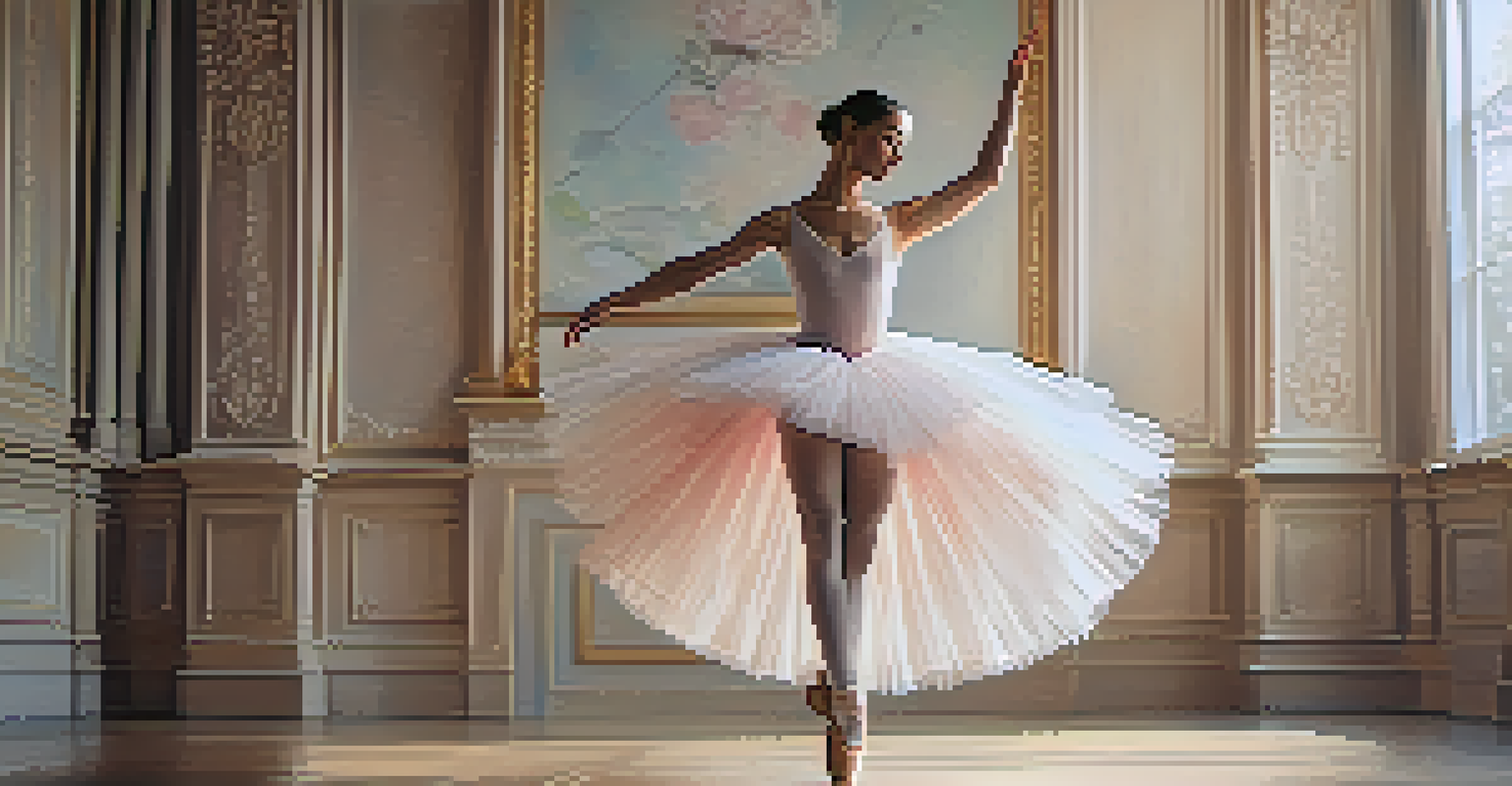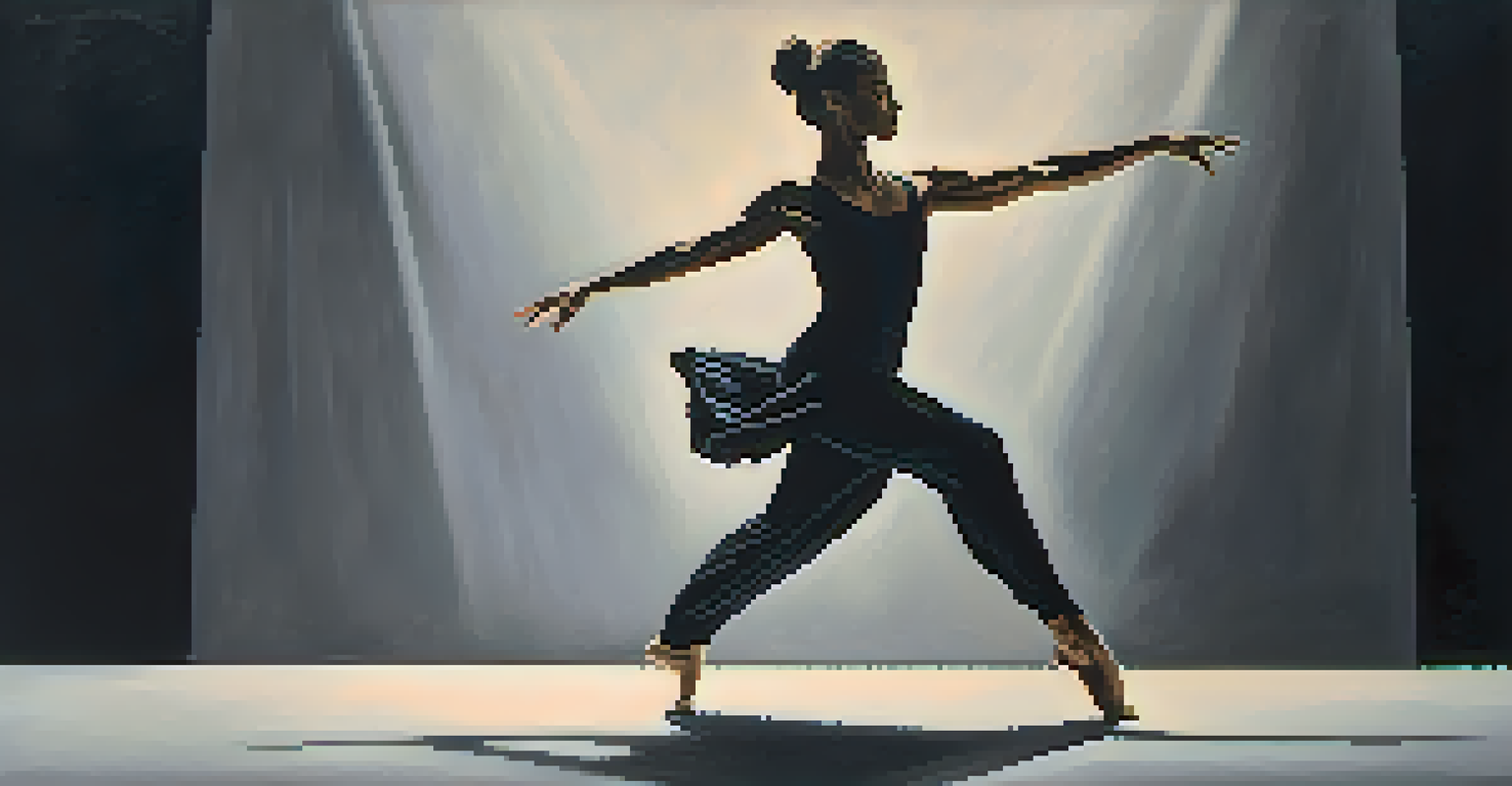Color Psychology in Dance Costumes: Impact on Performance

Understanding Color Psychology in Dance
Color psychology explores how different hues evoke emotions and influence behavior. In the world of dance, this translates into how performers feel and express themselves on stage. For instance, vibrant reds can ignite passion, while cool blues may evoke calmness, setting the tone for a performance.
Colors are the smiles of nature.
Dancers often choose colors based on the mood of their routines. A piece that conveys joy might feature bright yellows, while a dramatic piece could lean towards deep blacks or reds. These choices not only affect the dancer’s state of mind but also how the audience perceives the performance.
Understanding the emotional implications of color can help choreographers and dancers make informed decisions about their costumes. This awareness can enhance the overall impact of a performance, creating a deeper connection between the dancers and their audience.
The Role of Color in Performance Mood
Colors can significantly influence the mood of a dance performance. For example, a dancer dressed in warm colors, like orange or red, might radiate energy and excitement, prompting the audience to feel the same way. This reciprocal emotional exchange enhances the performance experience for everyone involved.

Additionally, the psychological effects of colors can lead dancers to alter their movements based on what they wear. A costume that feels light and airy can encourage fluid, graceful movements, while a darker color scheme might lead to more grounded and powerful expressions.
Color Shapes Dance Emotions
Color psychology influences how dancers express emotions on stage, impacting both their performance and audience perception.
Ultimately, the right color choice in costumes can elevate a performance, allowing dancers to embody the emotions tied to their routine. This alignment of color and movement creates a captivating experience that resonates with the audience.
Cultural Significance of Colors in Dance Costumes
Colors carry different meanings across cultures, which can greatly influence how they are perceived in dance. For instance, white often symbolizes purity in Western cultures, while it may represent mourning in some Eastern traditions. Understanding these nuances is crucial for dancers who want to convey specific themes or emotions.
Color is the keyboard, the eyes are the harmonies, the soul is the piano with many strings.
Incorporating culturally significant colors into dance costumes can add layers of meaning to a performance. A dancer using colors that resonate with their cultural background can create a more authentic and powerful portrayal of their story. This connection can captivate audiences who recognize and appreciate these cultural references.
Thus, awareness of cultural implications in color choices not only enhances individual performances but also promotes inclusivity and understanding among diverse audiences.
Color's Impact on Audience Perception
The colors dancers wear can shape how audiences interpret the performance. Bright, bold colors might energize the crowd, while muted tones may invite contemplation and introspection. This dynamic plays a vital role in how the audience engages with the performance.
For example, a vibrant costume can draw the audience’s attention immediately, making it easier to connect with the dancer’s energy. On the other hand, subtle colors may encourage the audience to focus more on the story being told through movement rather than the visual spectacle.
Cultural Meanings of Colors
Understanding the cultural significance of colors in dance costumes can enhance storytelling and create deeper connections with the audience.
Ultimately, the strategic use of color in dance costumes can enhance storytelling, allowing audiences to experience a fuller emotional journey throughout the performance.
Choosing the Right Colors for Different Styles
Different dance styles often call for specific color palettes. For instance, classical ballet frequently features pastels and whites to evoke elegance and grace, while hip-hop might lean towards bold and vibrant hues that reflect urban culture. Knowing these conventions allows dancers to make choices that resonate with their audience.
Moreover, the choice of color can also reflect the theme of a dance piece. A contemporary piece exploring themes of struggle might utilize darker shades to communicate heaviness, while a celebratory folk dance could embrace bright colors that embody joy and festivity.
By aligning costume colors with dance styles and themes, performers can create a more cohesive and impactful presentation, ensuring that the audience receives a clear message through both dance and visual elements.
The Science Behind Color and Performance
Research in color psychology suggests that colors can affect physical performance as well. For example, studies indicate that athletes wearing red may perform better in competitive settings due to the color's association with dominance and power. This principle can also apply to dancers, potentially enhancing their confidence and energy on stage.
Additionally, colors can influence physiological responses, like heart rate and adrenaline levels. A dancer in a bright, stimulating color may experience heightened excitement and motivation, while wearing cooler tones could promote a sense of calmness, affecting their performance dynamics.
Color Affects Performance Dynamics
The choice of colors can influence a dancer's physical performance and emotional state, enhancing their overall stage presence.
Understanding these scientific insights can empower dancers to choose colors that not only align with their emotional expression but also enhance their physical capabilities during performances.
Practical Tips for Selecting Costume Colors
When selecting colors for dance costumes, start by considering the theme and mood of the performance. Take some time to reflect on what emotions you want to evoke, and choose colors that align with those feelings. This intentionality can guide your selection process and enhance your overall presentation.
Experimenting with different color combinations can also yield exciting results. Sometimes, unexpected pairings can create unique visual impacts, helping dancers stand out. Don't shy away from bold choices, but remember to balance them with colors that ground the overall look.

Lastly, consider how the colors will look under stage lighting. Colors can change dramatically when illuminated, so it's wise to test your costume under similar conditions to ensure the desired effect is achieved during the performance.
Conclusion: The Power of Color in Dance
Color psychology plays a crucial role in the world of dance, influencing not only the performers but also the audience's experience. From enhancing emotional expression to shaping audience perception, the right color choices can elevate a performance to new heights.
By understanding the significance of color in dance costumes, dancers and choreographers can make informed decisions that resonate on multiple levels. This thoughtful approach can lead to more engaging and memorable performances.
In the vibrant world of dance, color is not just a visual element; it is a powerful tool for expression, communication, and connection. Embracing this can transform a dance performance into a truly unforgettable experience.